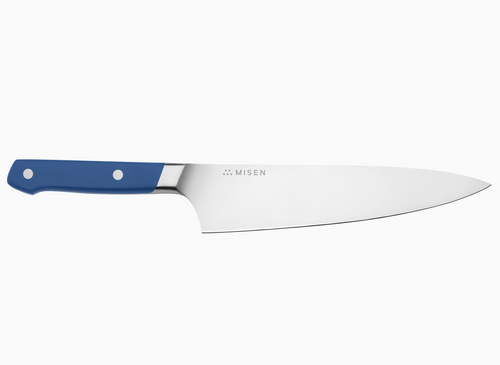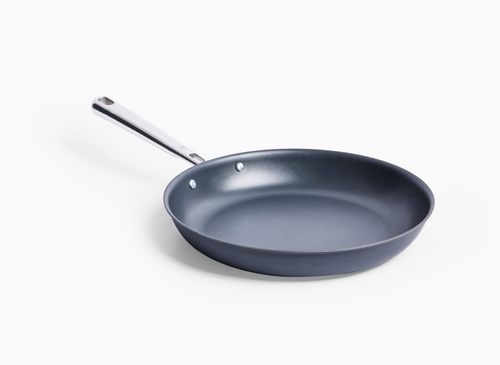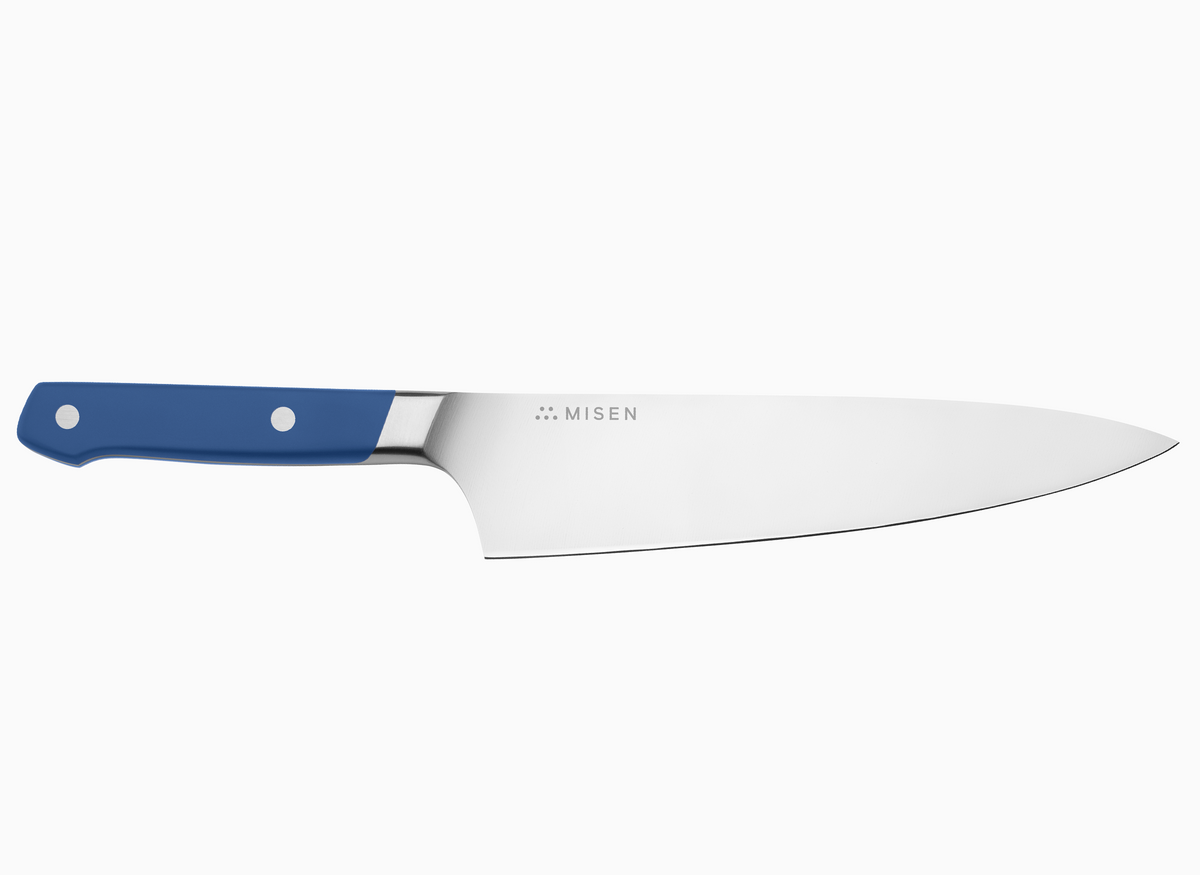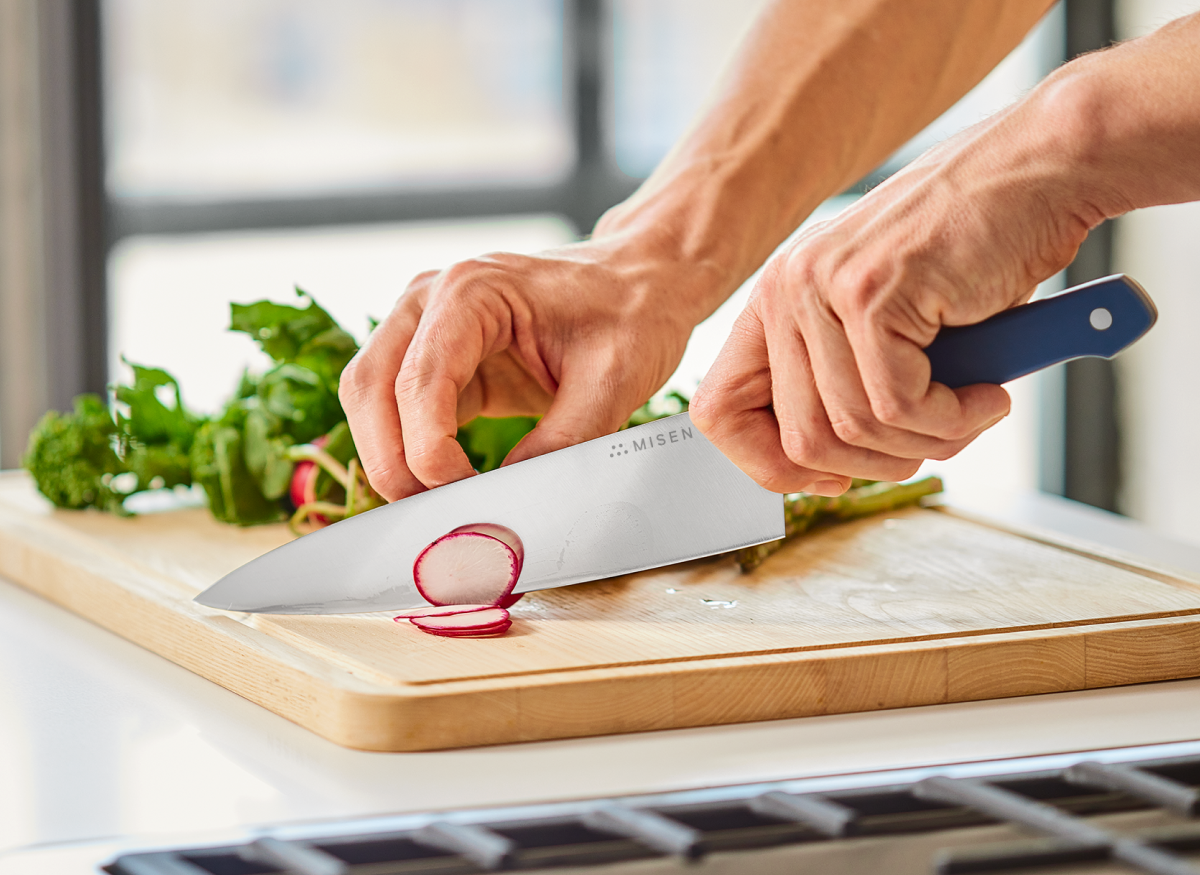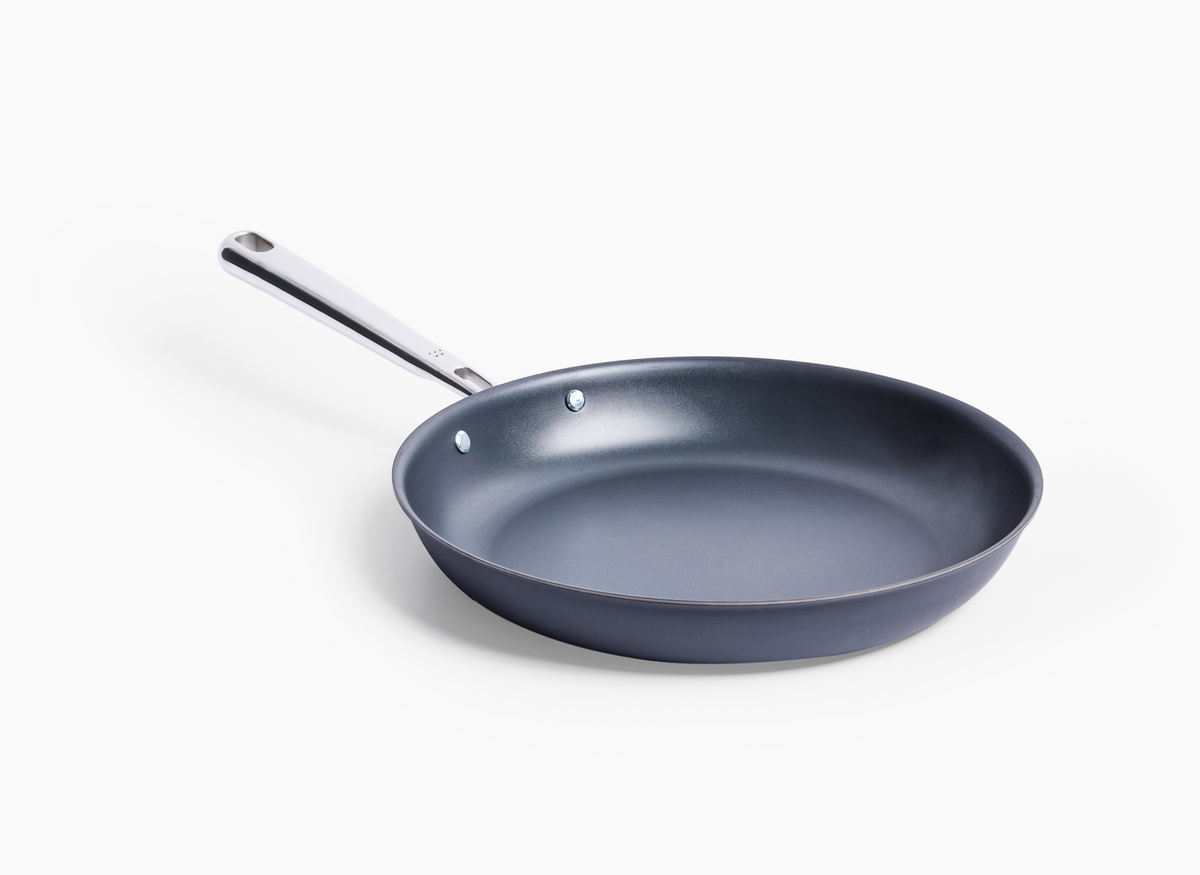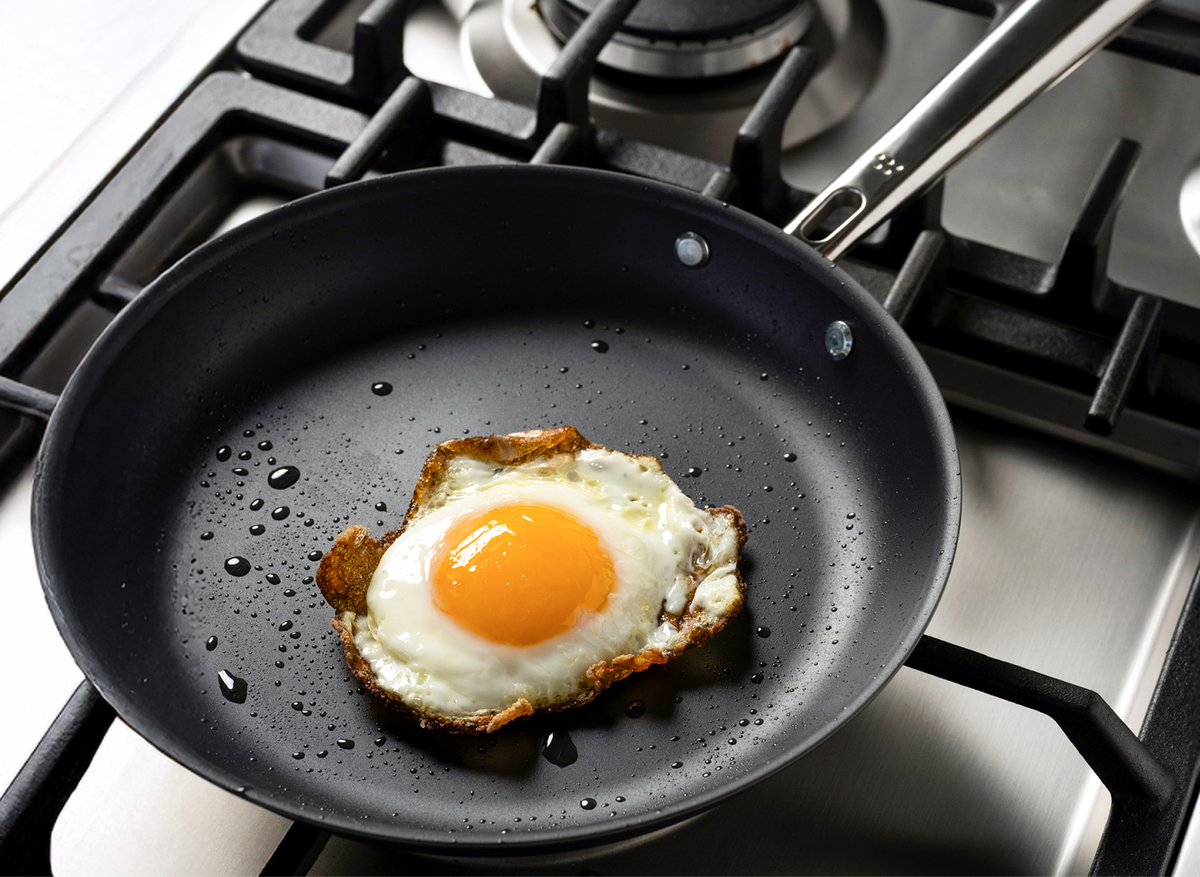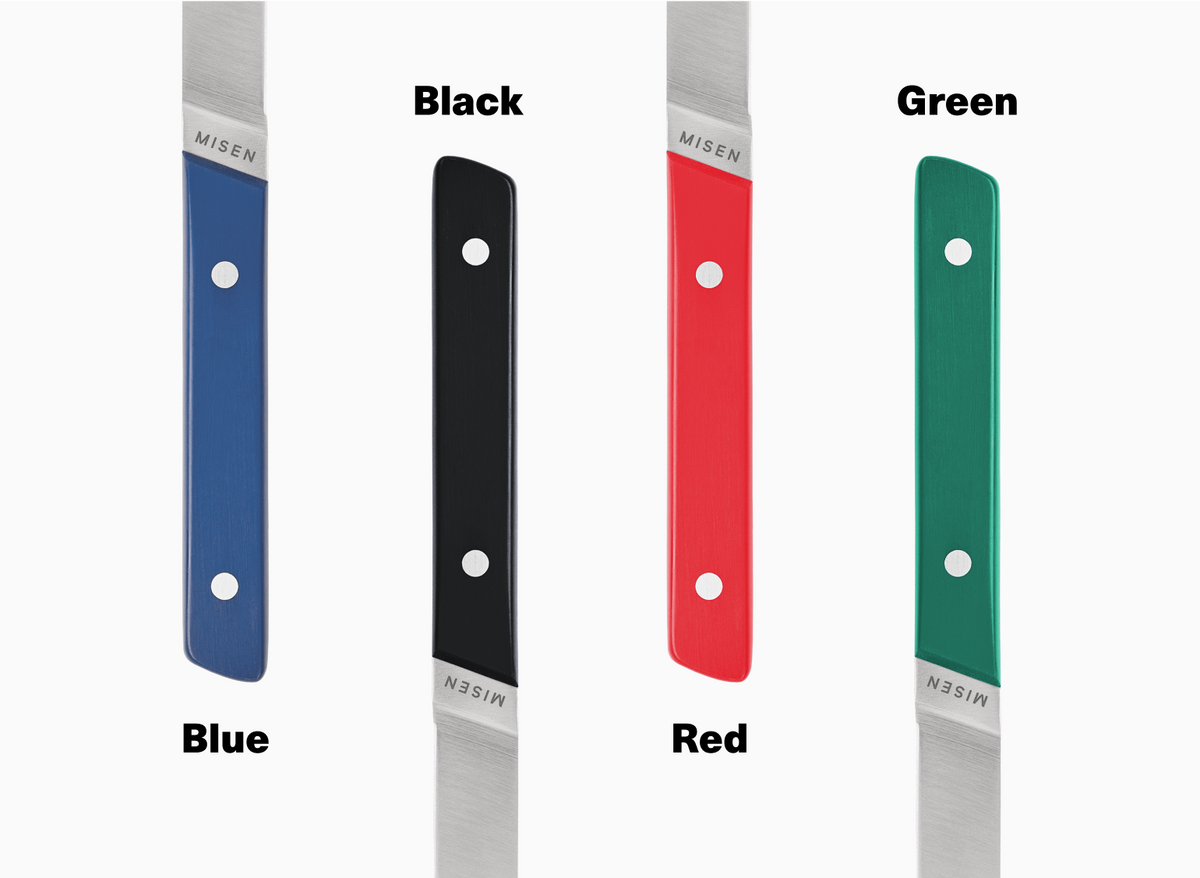Is Borosilicate Glass Toxic? Safety, Health Risks, and Care Tips

Introduction
Understanding Borosilicate Glass Basics
Borosilicate glass is a special type of glass that's built to handle extreme temperature changes without breaking - think moving a dish straight from freezer to oven [1]. What makes it different? It's all about the unique blend of silica and boron trioxide that creates an incredibly stable material [1]. Unlike regular glass that might shatter from sudden temperature shifts, borosilicate glass stays strong thanks to its low thermal expansion - it barely expands or contracts with heat [1]. This durability extends beyond just temperature resistance. The glass resists scratches, won't react with your food, and maintains crystal-clear transparency over time [2]. Its smooth, non-porous surface means nothing gets absorbed - no stains, no odors, no bacteria [3]. While it requires higher temperatures to manufacture than regular glass, the result is a material that performs reliably in your kitchen for years to come [1].
Why Safety Concerns Exist About Glass Products
Not all glass is created equal when it comes to safety. Research has revealed that many glass products - especially vintage and decorated pieces - can contain harmful heavy metals like lead and cadmium [4]. A University of Plymouth study found these contaminants in about 70% of tested drinking vessels, sometimes at levels far exceeding safety standards [4]. How did they get there? Manufacturers used to add these metals to create vibrant colors and decorative effects, or simply to make glass easier to work with at lower temperatures [4]. Green glass might contain uranium oxide, while red varieties often used cadmium [6]. The real concern? These metals can slowly leach into your food and drinks, potentially causing serious health issues over time - from nerve damage to kidney problems [4]. The good news is that plain, clear glass is naturally non-toxic and completely safe [5]. Understanding these differences helps you make informed choices about the glassware you bring into your kitchen.
The Rising Popularity of Borosilicate Glass in Homes
More home cooks are discovering borosilicate glass as they seek safer, more sustainable kitchen solutions. Sales have surged by over 30% as people move away from materials that might leach chemicals into their food [7]. It's not just about safety - today's conscious consumers are willing to invest in quality products that last longer and perform better [7]. You'll find borosilicate glass everywhere in modern kitchens: from storage containers that go straight from fridge to microwave, to baking dishes that handle extreme oven temperatures without a second thought [8]. The material checks all the boxes that matter to today's home cooks - it's completely non-toxic, won't absorb flavors or odors, and can be recycled endlessly without losing quality [7]. Plus, unlike plastic containers that stain and warp over time, borosilicate glass maintains its clarity and performance year after year [8]. For anyone looking to reduce their environmental impact while keeping their family safe, borosilicate glass offers a practical solution that doesn't compromise on performance.
What We'll Cover About Borosilicate Glass Safety
Here's what we'll cover to help you understand borosilicate glass safety. First, we'll break down what makes this glass different from regular glass - in simple terms you can actually use. Then we'll dig into the real safety questions: Is it toxic? How does it compare to plastic, ceramic, and stainless steel cookware? We'll explore scientific research on chemical leaching, health concerns about boron compounds, and what regulatory standards mean for your kitchen. You'll also learn practical tips for choosing the right glassware, proper care techniques to maximize safety and longevity, and how to spot potential issues before they become problems. By the end, you'll have clear answers about whether borosilicate glass belongs in your home - backed by science, not marketing hype.
Composition and Properties: What Makes Borosilicate Glass Different
Borosilicate glass's unique chemistry creates a non-porous, heat-resistant material that outperforms regular glass by a factor of ten in chemical stability.
Chemical Composition: Silica, Boron Trioxide, and Other Elements
As we covered in the introduction, borosilicate glass gets its strength from a specific blend of ingredients. What really sets it apart is how these components work together. The silica and boron trioxide form the backbone of the glass network, with boron playing the starring role in creating those heat-resistant properties you rely on [11].
Here's what makes the chemistry interesting: when manufacturers add more than 15% boron oxide, they create high-borate borosilicate glass - a specialized version with different chemical resistance properties [11]. This precision in formulation explains why your borosilicate cookware performs so differently from regular glass dishes. The specific ratios aren't just numbers on a spec sheet - they directly impact how your glassware handles everything from freezer storage to oven cooking.
Non-Porous Structure and Its Health Implications
The non-porous structure of borosilicate glass is one of its biggest safety advantages in your kitchen. Think of it as an impenetrable barrier - nothing gets in or out. This smooth surface stops bacteria from finding hiding spots, prevents your tomato sauce from leaving permanent stains, and keeps last night's garlic from flavoring this morning's smoothie [12].
What does this mean for your daily cooking? You can store acidic marinades, ferment vegetables, or prep meal components without worrying about chemical reactions or flavor transfer. Even better, testing shows that scratches and everyday wear don't compromise this protection - the glass maintains its non-reactive properties even after years of use [13]. This makes cleanup simple too - no deep scrubbing needed since nothing penetrates the surface [12].
Thermal Resistance Properties and Safety Advantages
Here's where borosilicate glass really shines in your kitchen. Its incredibly low thermal expansion means you can move dishes straight from freezer to oven without the heart-stopping crack you'd get with regular glass. While standard glass can only handle about 100°F temperature swings, borosilicate laughs at temperature changes up to 330°F [1].
This isn't just convenient - it's a game-changer for meal prep and cooking flexibility. Whether you're pulling a stainless steel pan off high heat or transferring glass storage containers between temperature extremes, understanding these thermal properties helps you cook with confidence. The same characteristics that make laboratory-grade borosilicate withstand extreme temperatures also protect your everyday cookware from thermal shock [14].
Chemical Stability Compared to Other Materials
When it comes to chemical stability, borosilicate glass outperforms regular glass by a factor of ten. Testing shows it resists breakdown in everything from acidic tomato sauce (pH 6) to alkaline baking soda solutions (pH 10), especially when heat gets involved [15].
This superior stability isn't just laboratory trivia - it directly impacts your cooking and food storage. You can marinate meat in citrus juice, store fermented foods, or reheat last night's pasta sauce without worrying about the container breaking down or affecting your food's taste. Even after years of use, scratches, and dishwasher cycles, borosilicate maintains its chemical integrity [1]. This same stability that makes it essential for laboratory work also makes it the smart choice for health-conscious home cooks who want their containers to be as pure as the food they store.
Toxicity Assessment: Examining the Safety Evidence
Scientific testing by the Cosmetic Ingredient Review Expert Panel confirms borosilicate glass is safe, with no toxicity found in both animal and human studies.
Scientific Research on Borosilicate Glass and Toxicity
Scientific testing consistently confirms borosilicate glass is safe for everyday use. The Cosmetic Ingredient Review Expert Panel examined multiple forms of borosilicate glass and found them safe even for cosmetic applications - where safety standards are exceptionally strict [16]. Their comprehensive assessment included both animal and human data, validating safety across all borosilicate variants [16].
Recent biomedical research provides even more reassurance. When researchers tested borosilicate glass with living cells, they found no toxicity at normal concentrations [17]. The cells maintained their normal structure and continued growing healthily when exposed to borosilicate extracts [17]. This explains why medical professionals and laboratories trust borosilicate glass for applications requiring absolute purity.
Potential for Chemical Leaching Under Various Conditions
As we discussed in the previous section, borosilicate glass shows exceptional resistance to chemical leaching - performing ten times better than regular glass in acidic and alkaline conditions. But what happens during real-world use?
Laboratory studies reveal an interesting protective mechanism: when borosilicate glass contacts liquids, it forms a microscopic protective layer on its surface [19]. This layer acts like a shield, preventing any further interaction between the glass and its contents. The process naturally slows over time until virtually no exchange occurs between the glass and whatever you're storing [19].
This self-protecting behavior explains why borosilicate maintains food purity so effectively - whether you're storing acidic tomato sauce or alkaline baking soda solutions. For home cooks concerned about chemical safety, this means your quality cookware and storage containers actively protect your food's integrity.
Boron Compounds: Understanding the Health Concerns
Understanding boron compounds helps put borosilicate glass safety in perspective. While pure boron compounds can cause health issues at high exposures - including digestive problems and kidney effects - borosilicate glass is a completely different story [20].
Here's what matters for everyday use: borosilicate glass doesn't release harmful amounts of boron under normal conditions. The glass structure locks boron molecules in place, preventing them from entering your food or drinks [20]. Even the stringent Cosmetic Ingredient Review Expert Panel confirmed borosilicate glasses are safe for direct skin contact in cosmetics - a much more demanding standard than kitchen use [16].
This stability is why professional kitchens and laboratories choose borosilicate - it simply doesn't break down or release compounds like other materials might.
Regulatory Standards and Safety Certifications Worldwide
Quality borosilicate glass meets strict international safety standards. The ISO 3585 certification requires manufacturers to prove their glass can handle temperature swings up to 160°C without compromising safety or durability [21]. For products used in laboratories - where precision matters most - the ASTM E438 standard adds even more requirements, classifying borosilicate as Type I, Class A glass [22].
What do these certifications mean for you? They guarantee consistent quality through measurable tests:
- Thermal shock resistance (surviving rapid temperature changes)
- Chemical durability (resisting breakdown from acids or bases)
- Mechanical strength (handling daily use without weakening)
Look for products labeled "borosilicate glass 3.3" or showing ISO 3585 compliance - these indicate the glass contains the optimal 12-15% boron trioxide ratio for maximum safety and performance [21]. When manufacturers meet these standards, you can trust their products for everything from meal prep to food storage.
Health Comparison: Borosilicate Glass vs. Alternative Materials
Borosilicate glass resists chemical breakdown ten times better than regular soda-lime glass, creating a safer surface for food storage and cooking.
Borosilicate vs. Soda-Lime Glass: Toxicity Differences
Here's what makes borosilicate glass a safer choice than regular soda-lime glass. Testing reveals borosilicate resists chemical breakdown ten times better than soda-lime glass - whether you're storing acidic tomato sauce or alkaline cleaning solutions [24]. The difference comes down to what's inside: soda-lime glass contains more sodium and calcium, which can slowly escape into your food or drinks. Borosilicate's specific blend of 80% silica and 13% boron trioxide creates a rock-solid structure that keeps everything locked in place [25].
Think of it this way - when soda-lime glass meets acidic foods, sodium ions start breaking free like a slow leak. But borosilicate actually builds its own protective shield, sealing itself against further breakdown [24]. For everyday kitchen use, this means your leftovers stay pure and untainted. While soda-lime glass might release trace elements over months of use, borosilicate maintains its integrity meal after meal [24].
Glass vs. Plastic: Comparing Health Risks and Benefits
Let's talk about why glass beats plastic for keeping your food safe. The biggest win? Glass won't leak chemicals into your meals. While plastic containers can release BPA and phthalates - especially when heated or worn - glass stays completely inert [26]. You've probably noticed how plastic containers hold onto that spaghetti sauce smell or turn orange after storing leftovers. That's because plastic is porous, creating tiny spaces where bacteria and odors hide. Glass's smooth surface wipes clean every time [27].
Here's another key difference: temperature flexibility. You can move glass from freezer to oven without worry, while plastic warps, melts, or releases more chemicals when temperatures swing [28]. Plus, you can actually see when glass is clean - no guessing if that cloudy plastic is truly sanitized [26]. Yes, glass costs more upfront, but considering it lasts indefinitely and recycles perfectly (unlike plastic, where we toss a million bottles per minute with only 9% getting recycled), it's the smarter long-term investment [28].
Alternatives Like Ceramic, Stainless Steel, and Silicone
Looking beyond glass and plastic? Here's what other materials bring to your kitchen. Ceramic mugs keep your morning coffee warm for about 30-45 minutes - not as long as insulated options, but they won't alter your brew's taste [29]. Just make sure any ceramic pieces you buy are glazed with lead-free, cadmium-free finishes. Ask the manufacturer if you're unsure [30].
Stainless steel is your go-to for temperature control. Double-walled versions keep coffee hot for 4-6 hours and iced drinks cold all day [29]. Look for food-grade stainless (labeled 18/8 or 304) to avoid any chemical concerns. Some folks notice a slight metallic taste with acidic drinks like orange juice - if that bothers you, try ceramic-lined stainless steel tumblers that combine durability with pure taste [29]. Traditional ceramics like porcelain bring their own advantages - they're incredibly hard-wearing and chemically stable, making them workhorses in busy kitchens [30].
Making Informed Choices for Different Household Uses
So how do you choose the right material for your kitchen needs? Borosilicate glass shines when you need versatility. Store last night's pasta sauce, then pop the same container in the oven to reheat - it handles temperature swings up to 500°F without breaking a sweat [31]. That non-porous surface we mentioned earlier means yesterday's garlic won't flavor today's fruit salad [31].
For beverages, borosilicate keeps things pure. Whether it's your morning coffee or evening wine, you'll taste exactly what you're meant to taste - nothing more, nothing less [10]. This makes it perfect for everyday drinking glasses, travel mugs, and storage bottles.
When weighing your options, remember that borosilicate beats plastic hands-down for safety. No BPA, no phthalates, no mysterious chemicals - just pure, stable glass that won't break down over years of use [32]. It's why labs trust it for precision work and why professional-grade cookware often features borosilicate glass lids. For food storage and cooking, borosilicate gives you restaurant-quality performance with home-kitchen safety.
Potential Risks and Special Considerations
While incredibly durable, borosilicate glass can handle temperature swings up to 330°F and remains the safest choice when you stick to clear, undecorated versions.
Physical Safety: Breakage and Proper Handling
Let's be honest — borosilicate glass is still glass, which means it can break. While it's significantly stronger than regular glass, proper handling makes all the difference in keeping you safe.
Before using any borosilicate glassware, give it a quick inspection. Look for chips, cracks, or any damage that could compromise its strength. Even hairline fractures can lead to unexpected breakage, especially when temperatures change.
For everyday kitchen use, handle your glassware with dry hands and a firm grip. If you're working in a lab setting or with specialized equipment, consider wearing cut-resistant gloves for extra protection. When dealing with vacuum applications or pressurized containers, additional safety measures like protective tape wrapping can help contain fragments if something goes wrong.
If breakage does occur, prioritize safety first. Use proper protective gear like gloves and eye protection when cleaning up, and dispose of broken glass in appropriate containers — never your regular trash where it could injure someone.
High-Temperature Applications and Safety Limits
When it comes to heat, borosilicate glass is a real performer. It can handle temperature swings up to 330°F (170°C) without breaking — that's why you can take it straight from freezer to oven without worry. This impressive thermal resistance comes from its unique structure that expands and contracts minimally with temperature changes.
In the kitchen, this means you can confidently use borosilicate for everything from baking dishes to storage containers that go from fridge to microwave. While it's incredibly heat-resistant, remember it's not completely fireproof — treat it with the same respect you'd give any quality cookware.
For best results, always preheat your oven before inserting borosilicate bakeware. This simple step helps prevent thermal shock and extends the life of your glassware. And unlike regular glass that might shatter from temperature changes, borosilicate's superior thermal stability means you can pour boiling water into it or move hot dishes to cool surfaces without fear.
Considerations for Children, Elderly, and Sensitive Individuals
Different family members may need extra care when using borosilicate glass. Kids and elderly family members might have a harder time gripping smooth glass surfaces, especially when items are hot or wet. While the material itself is completely safe — no BPA, no chemical leaching — its potential to break means adult supervision is wise for younger users.
For those with chemical sensitivities or health concerns, borosilicate glass actually offers real benefits. Its non-porous surface won't harbor bacteria or absorb odors, and its chemically inert nature means nothing transfers to your food or drinks. This makes it an excellent choice for anyone looking to reduce their exposure to potentially harmful materials.
When using borosilicate cookware or containers with hot contents, set up your workspace thoughtfully. Keep hot items away from counter edges, use trivets or hot pads, and ensure handles are turned inward to prevent accidental bumps. These simple precautions help everyone in your household use borosilicate glass safely.
Colored and Decorative Borosilicate Glass: Additional Concerns
Here's something important to know: not all borosilicate glass is created equal. While plain, clear borosilicate is completely safe, colored or decorative versions need a closer look.
As we discussed in the introduction, some manufacturers historically used heavy metals to create colors — like uranium oxide for green or cadmium for red glass. These additives can potentially leach into your food or drinks over time.
When shopping for borosilicate glass, stick to reputable brands that clearly state their products are lead-free and cadmium-free. Look for FDA approval for food contact and California Prop 65 compliance. If you see unusually vivid colors or elaborate decorations, it's worth asking questions about what's in the glass.
Our recommendation? Keep it simple with clear, transparent borosilicate glass. You'll get all the benefits of this amazing material — durability, thermal resistance, and chemical stability — without any concerns about decorative additives. Your cookware collection should enhance your health, not compromise it.
Care and Maintenance for Safe, Long-lasting Use
Gentle cleaning, gradual temperature transitions, and regular inspections keep your borosilicate glass performing safely for years of reliable kitchen use.
Proper Cleaning Methods to Maintain Glass Integrity
Keeping your borosilicate glass in top condition starts with proper cleaning. Stick to mild dish soap and warm water - harsh chemicals aren't necessary and could leave residues behind. After cooking or storing food, give everything a thorough rinse to prevent any buildup or cross-contamination.
For stubborn, stuck-on food, resist the urge to scrub aggressively. Instead, let your glassware soak in warm, soapy water for 10-15 minutes. This gentle approach loosens deposits without risking scratches that could weaken the glass over time. A soft sponge or dishcloth works best - save the steel wool for your stainless steel cookware.
While cleaning, take a moment to inspect your glassware. Run your fingers along the rim and check for any chips, cracks, or rough spots. Catching damage early keeps you safe and helps you get the most from your investment.
Avoiding Thermal Shock and Preventing Damage
As discussed in earlier sections, borosilicate glass can handle temperature changes up to 330°F better than regular glass - but it's not invincible. The key to preventing cracks? Gradual temperature transitions.
Never take a dish straight from the freezer to a hot oven, or pour boiling water into a cold container. These sudden shocks stress the glass in ways that can cause immediate cracking or create weak spots that fail later.
Here's what works: Let frozen dishes sit at room temperature for 10-15 minutes before heating. When baking, place your glassware in the oven as it preheats rather than into a fully hot oven. After cooking, let hot dishes cool on a trivet or cooling rack - never on a cold granite counter or in the sink with cold water.
Think of it this way: treat your borosilicate glass like you'd acclimate to a hot bath - ease into temperature changes rather than shocking your system.
Inspecting for Cracks, Chips, and When to Replace
Making inspection a habit protects both you and your glassware investment. Before each use, give your borosilicate pieces a quick once-over. Look for chips along the rim, hairline cracks in the body, or scratches that seem deeper than surface level.
Pay extra attention to the areas that take the most stress - corners of baking dishes, handles on measuring cups, and the bottom edges that contact countertops. Even small defects in these spots can grow into bigger problems under heat or pressure.
When should you retire a piece? If you can catch your fingernail on a crack, see a chip that's lost glass material, or notice any cloudy areas that suggest internal stress - it's time to replace it. Don't risk it. Unlike with kitchen knives that can be professionally sharpened when they dull, damaged glass can't be repaired.
Keep track of when you bought pieces and how heavily you use them. This helps you spot patterns - maybe your favorite baking dish that sees weekly use needs replacing every few years, while specialty pieces last much longer.
Storage Recommendations for Safety and Longevity
Smart storage keeps your borosilicate glass ready for years of use. Start with completely clean and dry pieces - any trapped moisture can cause problems over time, especially in closed cabinets.
Choose a cool, dry spot away from the stove, dishwasher vents, or sunny windows. Temperature swings from these heat sources create unnecessary stress on the glass. If you're short on space, avoid the cabinet above your oven - it's often the hottest spot in the kitchen.
When stacking is necessary, cushion between pieces with shelf liner, dish towels, or even coffee filters. This prevents glass-on-glass contact that can cause chips or scratches. For odd-shaped items or pieces with lids, consider vertical storage solutions like a pan organizer - the same principles that protect your cookware work for glassware too.
Conclusion
The Verdict on Borosilicate Glass Toxicity
Borosilicate glass is safe for your kitchen. The extensive research we've covered shows it won't leach chemicals into your food, withstands temperature changes better than regular glass, and contains no toxic materials like lead or BPA. As discussed in earlier sections, its unique structure makes it chemically stable and non-reactive - exactly what you want for food storage and cooking. When shopping for glass cookware, look for items specifically labeled "borosilicate glass 3.3" or with ISO 3585 compliance to ensure you're getting the real thing, not regular soda-lime glass marketed as heat-resistant.
Best Practices for Safe Borosilicate Glass Use
To get the most from your borosilicate glass, follow these practical tips. Always check for chips or cracks before use - even small damage can lead to breakage. Clean with gentle dish soap and soft sponges to preserve the surface. Remember the temperature rule: avoid sudden changes over 330°F. That means letting hot dishes cool before washing and preheating your oven before inserting cold glassware.
When shopping, stick to plain, clear glass for the safest option. Colored or decorated pieces may contain additives, so verify they're labeled as lead-free and food-safe. Store your glassware with care - use shelf liners or stack with padding between pieces to prevent chips. For those using borosilicate in professional settings, note that certain chemicals like hydrofluoric acid can damage even this resilient glass.
Final Recommendations for Health-Conscious Consumers
Making the switch to borosilicate glass is a smart choice for your health and your kitchen. Focus on buying from reputable manufacturers who clearly label their products as borosilicate glass (not just "heat-resistant glass"). European-made products often have stricter safety standards, but quality options are available from many sources.
For everyday cooking, borosilicate glass offers peace of mind - no chemical leaching, no mysterious coatings, just pure glass that handles your kitchen demands. Its durability means you'll buy less often, reducing waste and saving money long-term. Whether you're storing leftovers, baking casseroles, or meal prepping, this material delivers the performance you need without health compromises.
Remember: quality cookware is an investment in your health. While borosilicate glass might cost more upfront than regular glass or plastic alternatives, its safety, durability, and versatility make it worthwhile for anyone serious about healthy cooking. Choose well-made pieces from trusted sources, care for them properly, and they'll serve your kitchen safely for years to come.
- Borosilicate glass is completely non-toxic and safe for food use, containing no lead, BPA, or other harmful chemicals
- Its unique chemistry creates superior heat resistance (up to 330°F temperature changes) and chemical stability 10x better than regular glass
- The non-porous surface prevents bacteria growth, odor absorption, and chemical leaching even after years of use
- Scientific studies confirm safety - the Cosmetic Ingredient Review Panel approved it even for cosmetic applications
- Choose clear, undecorated borosilicate glass and look for ISO 3585 certification to ensure quality
- Proper care includes gentle cleaning, gradual temperature changes, and regular inspection for damage
- Borosilicate outperforms plastic, soda-lime glass, and most other materials for safe food storage and cooking
- https://en.wikipedia.org/wiki/Borosilicate_glass
- https://www.schott.com/en-gb/expertise/materials/borosilicate-glass
- https://www.ddpsinc.com/knowledge/what-are-the-benefits-of-borosilicate-glass
- https://www.crystaliausa.com/blogs/blog/everything-you-need-to-know-about-safe-and-non-toxic-glassware?srsltid=AfmBOop9JTNwdMBBvlXYmLvQdhWEC0O6Xnyt2mtDelb1t_zZsMo19x-W
- https://www.zgs-glass.com/info/are-glass-products-harmful-to-the-human-body-92943414.html
- https://www.americastestkitchen.com/articles/5704-is-vintage-glassware-safe-to-drink-out-of
- https://www.safecoze.com/blog/non-toxic-high-borosilicate-cups-trends-2025/
- https://www.safecoze.com/blog/sustainable-high-borosilicate-glass-trends/
- https://www.marketresearchfuture.com/reports/borosilicate-glas-market-24943
- https://slyprc.com/ultimate-guide-high-borosilicate-glass-why-healthiersafer-choice-home/
- https://www.sciencedirect.com/topics/chemistry/borosilicate-glass
- https://www.safecoze.com/blog/non-porous-borosilicate-glass-healthier-choice/
- https://www.quora.com/Is-borosilicate-glass-safe-for-your-health
- https://www.labdepotinc.com/articles/what-is-borosilicate-glass-properties-benefits-and-best-practices-in-the-lab.html?srsltid=AfmBOoraGZXKTNQokwqB_1yX9y9MZmFvRCvntZv7wvZyMS0uQOkfBmz2
- https://www.ljstar.com/resources/glass-comparison/?srsltid=AfmBOop7keRs15QMnJxAaVXCzCzL7hGY0oO94wqqqBOcxZoH3A_2i49v
- https://pubmed.ncbi.nlm.nih.gov/24174476/
- https://www.sciencedirect.com/science/article/pii/S2452199X24002068
- https://www.sciencedirect.com/science/article/abs/pii/S0022309304004351
- https://pmc.ncbi.nlm.nih.gov/articles/PMC11000124/
- https://www.dcceew.gov.au/environment/protection/npi/substances/fact-sheets/boron-and-compounds
- https://www.safecoze.com/knowledge-center/iso-3585-global-standard-glass-quality/
- https://www.astm.org/e0438-92r18.html
- https://www.dwk.com/iso-certifications
- https://www.safecoze.com/knowledge-center/leach-resistance-in-glass-durability/
- https://www.chemscience.com/blog/borosilicate-glass-vs-soda-lime-glass-understanding-the-differences
- https://www.gpi.org/blog/5-benefits-using-glass-packaging-health-and-wellness
- https://www.ruanliving.com/blog/best-nontoxic-food-and-beverage-glass-storage-containers
- https://www.amymyersmd.com/blogs/articles/safe-food-storage
- https://giraffyco.com/blogs/news/the-best-materials-for-drinkware-glass-ceramic-or-stainless-steel
- https://lifewithoutplastic.com/glass-ceramic/
- https://www.glasafe.com/blogs/glasafe-blogs/why-choose-non-toxic-borosilicate-glass-over-regular-glass?srsltid=AfmBOoomlyOZf11AEqB7Vt9QBTz4gQSKOOUq15VFk_LDnTFFzug_j_6Q
- https://www.centurylife.org/a-post-plastic-home-known-and-unknown-dangers-of-plastic-and-alternatives-to-plastic-food-storage-shower-curtains-water-bottles-and-other-household-products/
- https://ehs.research.uiowa.edu/glass-and-other-sharps-injury-and-illness-prevention-labs
- https://advancedtechnicalprod.com/is-borosilicate-glass-safe/
- https://www.safecoze.com/blog/advantages-disadvantages-high-borosilicate-glass/
- https://www.glasafe.com/blogs/glasafe-blogs/what-is-borosilicate-glass-answering-16-common-faqs?srsltid=AfmBOor0sZtfB3H2pWlBvPkc9uZVVgHAwZzJ-eYxlm0YoR0mdFixBRM1
- https://research.wayne.edu/oehs/lab-safety/hot-plate-safety
- https://myborosil.com/blogs/tips-tricks/say-goodbye-to-toxins-how-borosilicate-glassware-keeps-your-drinks-safe?srsltid=AfmBOoqZ3N7sAvvSzqwurmoNDUhOnGmqJfXXQLAUaix-RfOUqlpm1dqi
- https://www.safecoze.com/blog/non-porous-high-borosilicate-glass-benefits/
- https://myborosil.com/blogs/tips-tricks/say-goodbye-to-toxins-how-borosilicate-glassware-keeps-your-drinks-safe?srsltid=AfmBOooB7BfkwARV5OiF77HFvUah5vJB3sbxBmPTziJkcg0NdaPyAMmB
- https://www.ultident.com/blog/post/how-to-maintain-your-borosilicate-laboratory-equipment-for-longevity
- https://www.labmanager.com/glassware-safety-in-the-lab-19779
- https://www.ablazeglassworks.com/maintenance-and-cleaning-tips-for-borosilicate-glass-reactors/
- https://www.safecoze.com/blog/why-borosilicate-wont-explode-in-oven/
- https://www.crystaliausa.com/blogs/blog/everything-you-need-to-know-about-borosilicate-glass?srsltid=AfmBOopFZMaqXZDBTpUk9iOIHXr4shW3iz6zPatGjHPJG7NEGgT8AbIs
- https://www.nytimes.com/wirecutter/blog/tempered-vs-borosilicate-glass/
- https://www.aiche.org/resources/publications/cep/2023/april/managing-risks-glass-hazardous-service
- https://slyprc.com/how-borosilicate-glassware-inspected-quality/
- https://www.labmanager.com/working-with-laboratory-glassware-20359
- https://www.tubularglass.com/blogs/how-to-store-the-heat-resistant-glass/how-to-store-the-heat-resistant-glass
- https://slyprc.com/borosilicate-glass-healthy-use/
- https://www.glasafe.com/blogs/glasafe-blogs/why-choose-non-toxic-borosilicate-glass-over-regular-glass?srsltid=AfmBOoqAd8YoIMeGpyXghMN-k4dR4X9By2Q_-mVzbjxWgXNhNP0cuwp8
- https://eatbeautiful.net/borosilicate-glass-cookware-the-best-pot-youre-not-using-yet/
